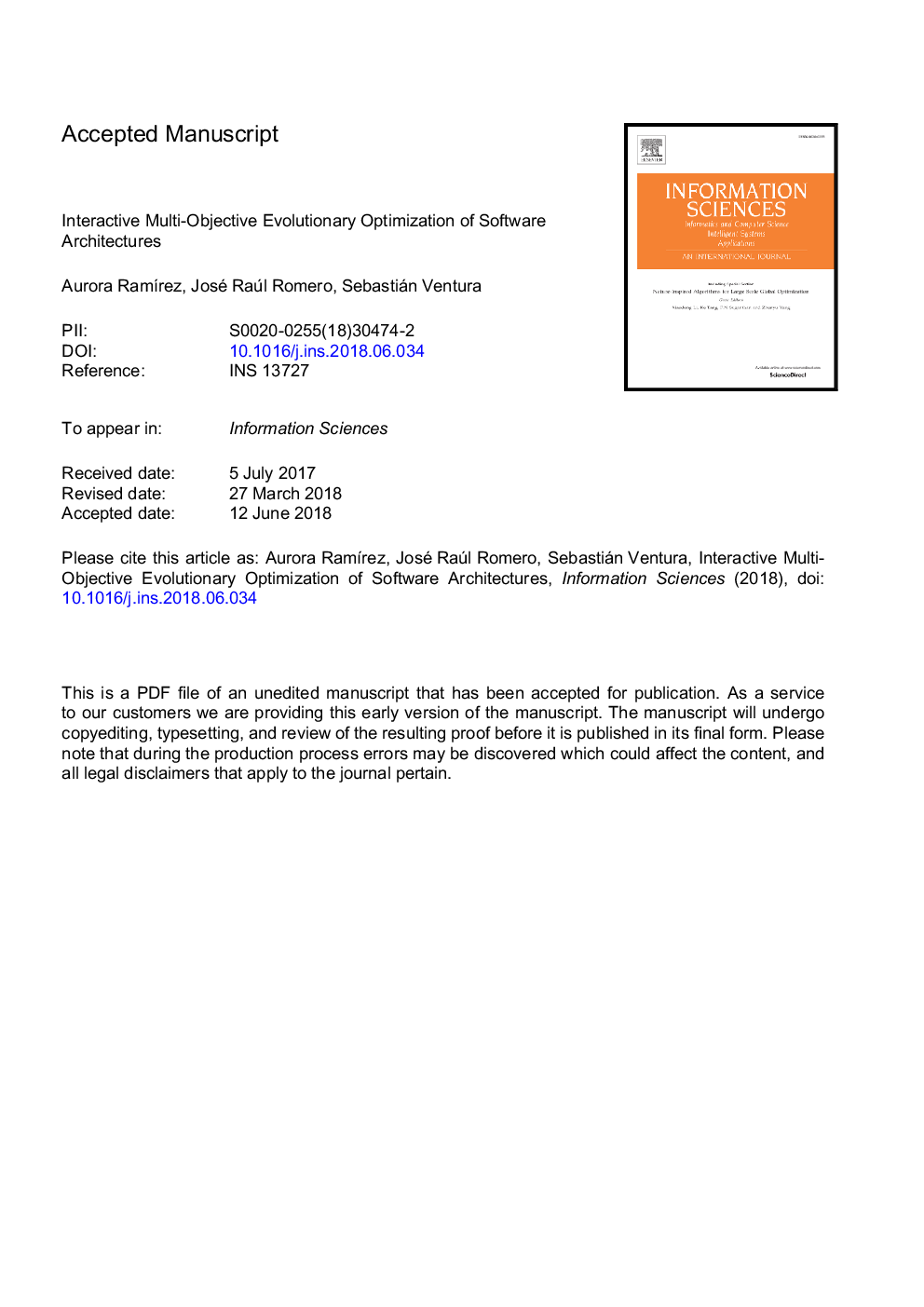| Article ID | Journal | Published Year | Pages | File Type |
|---|---|---|---|---|
| 6856206 | Information Sciences | 2018 | 43 Pages |
Abstract
While working on a software specification, designers usually need to evaluate different architectural alternatives to be sure that quality criteria are met. Even when these quality aspects could be expressed in terms of multiple software metrics, other qualitative factors cannot be numerically measured, but they are extracted from the engineers know-how and prior experiences. In fact, detecting not only strong but also weak points in the different solutions seems to fit better with the way humans make their decisions. Putting the human in the loop brings new challenges to the search-based software engineering field, especially for those human-centered activities within the early analysis phase. This paper explores how the interactive evolutionary computation can serve as a basis for integrating the humans judgment into the search process. An interactive approach is proposed to discover software architectures, in which both quantitative and qualitative criteria are applied to guide a multi-objective evolutionary algorithm. The obtained feedback is incorporated into the fitness function using architectural preferences allowing the algorithm to discern between promising and poor solutions. Experimentation with real users has revealed that the proposed interaction mechanism can effectively guide the search towards those regions of the search space that are of real interest to the expert.
Related Topics
Physical Sciences and Engineering
Computer Science
Artificial Intelligence
Authors
Aurora RamÃrez, José Raúl Romero, Sebastián Ventura,
